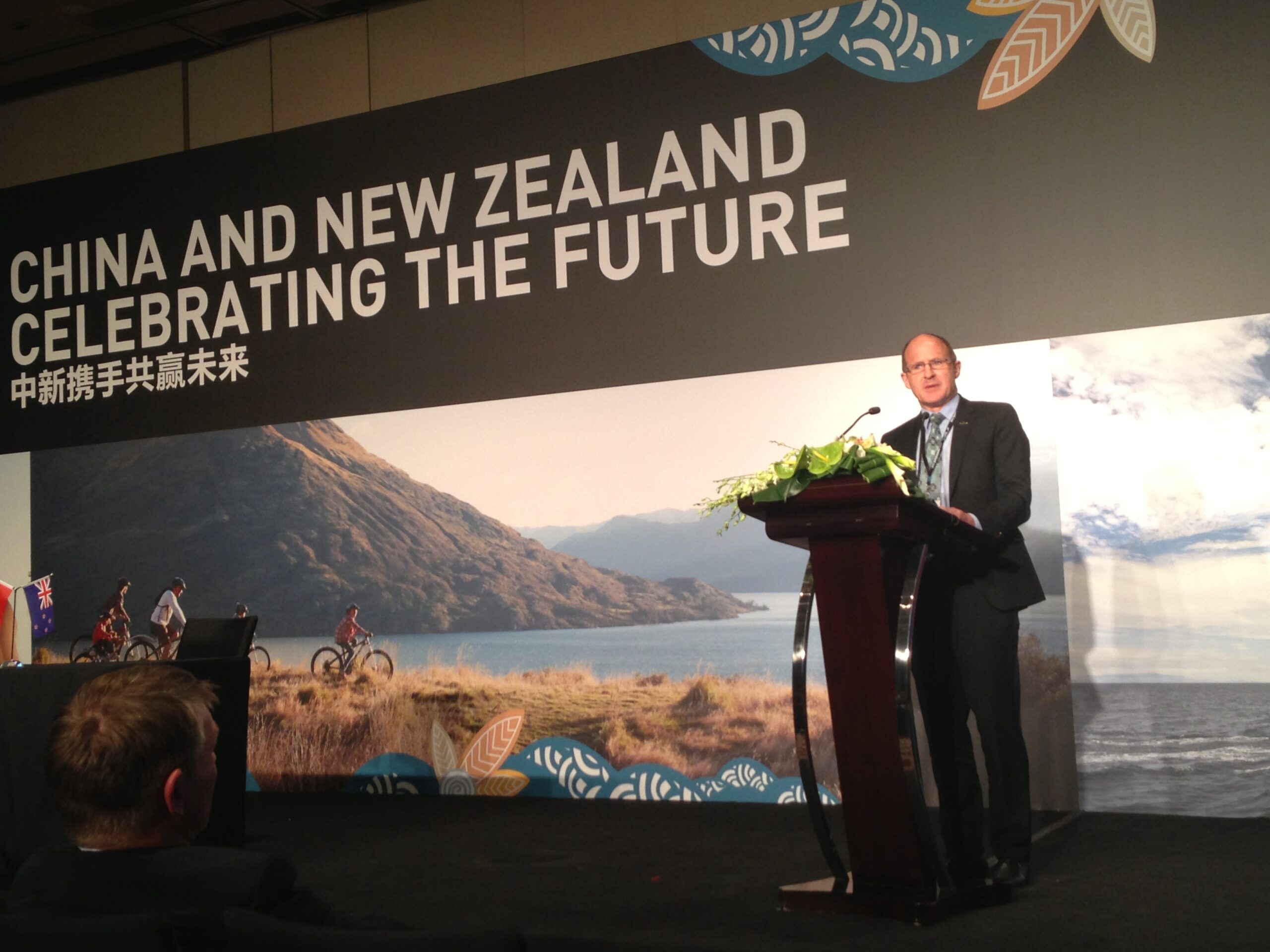Airborne Honey recently introduced the world’s first honest, undamaged and traceable (HUT) honey jar label at the Andaz Hotel in Shanghai. Airborne Honey presented to an audience of 250 people, including 60 media at, “China and New Zealand Celebrating the Future,” an event designed to celebrate strengthening trade relationships between the two countries. New Zealand and Chinese government representatives attended, including Prime Minister, Rt Hon John Key.
Airborne Honey, which can be found in premium department stores throughout Shanghai and Dalian, was one of only four New Zealand export companies invited to present at the event.
According to Airborne Honey Sales and Marketing Manager, John Smart, the HUT label was created in response to a need for greater food traceability and quality assurance.
“Mothers and families all over the world, from China to New Zealand, are asking questions about the quality and safety of the food they are feeding their families, explains John. “Unless every single batch of honey is measured and recorded, there is no way of knowing how good the quality is. At Airborne Honey, we can tell consumers more about the quality of honey in the jar than any other brand.”
The HUT label, which can now be found on all Airborne Honey jars, enables consumers to verify the quality and origin of the honey they are buying.
Honest means that the pollen percentage of the honey is displayed on the jar. If the percentage is high, it tells the customer that the honey is true to the variety printed on the label. For example, a Clover Honey should have more than 40 percent clover pollen, and a Manuka Honey will have over 70 percent Manuka pollen.
Undamaged on the Airborne Honey label demonstrates that the honey has not been heat damaged. Airborne Honey supports this by printing the HMF number on the label. A low HMF number means the honey has not been damaged through improper processing and storage.
Traceable means that every jar of Airborne Honey can be tracked all the way back to the beehive. All Airborne Honey labels features a batch number, which allows the company to do this.
John says that providing customers with a premium product and the reassurance that the food they’re eating is as pure and undamaged as possible has been part of the company’s culture since it was founded. It is an ethos that appeals to Chinese customers who have become increasingly discerning when it comes to food traceability, safety standards and quality. They are also keen to avoid antibiotics and hormones in their food, additions that are illegal in the New Zealand beekeeping industry.
“Three generations of the Bray Family have shaped Airborne Honey. From 1910 until now, each generation has built on the company’s uncompromising attitude towards honey quality,” says John. “This has resulted in Airborne Honey becoming one of the world’s oldest and most respected international honey brands. The current Managing Director, Peter Bray, is just as committed to providing a premium, undamaged honey as the ancestors that came before him.”
“Airborne Honey has also developed its own technology, which allows the company to confidently back up the quality claims on the jar,” adds John. “We have a patented liquefaction process that retains the natural healthy quality of the honey. This ensures we produce honey that is four times fresher than the New Zealand average and more than six times fresher than the international average. This is combined with proprietary software, which measures and tracks the quality of honey in every jar. On top of that, Airborne Honey is the only honey company in New Zealand with its own in-house laboratory, which measures samples from every batch of honey that comes in and goes out, and has a comparative database containing more than 30,000 records.”




